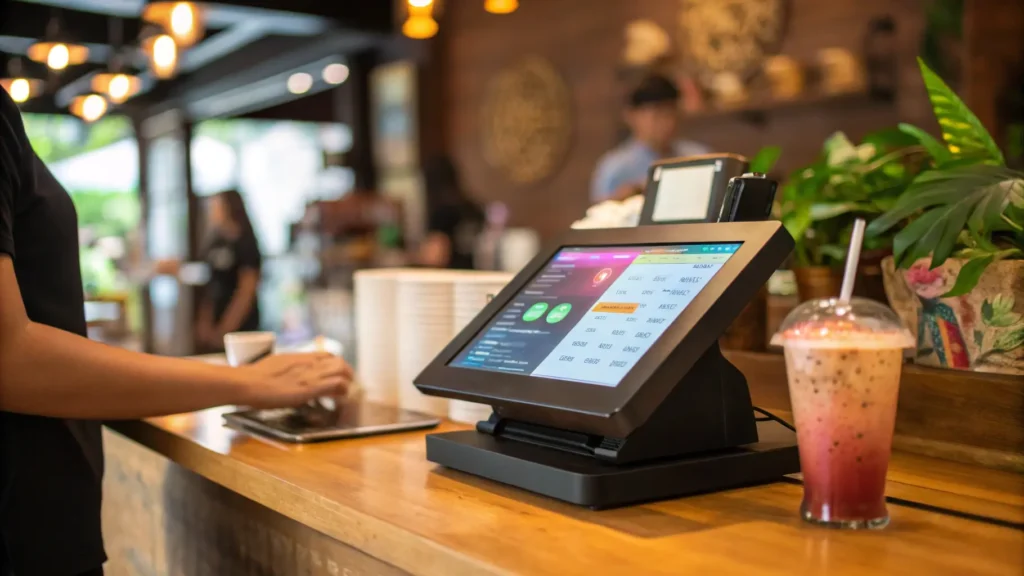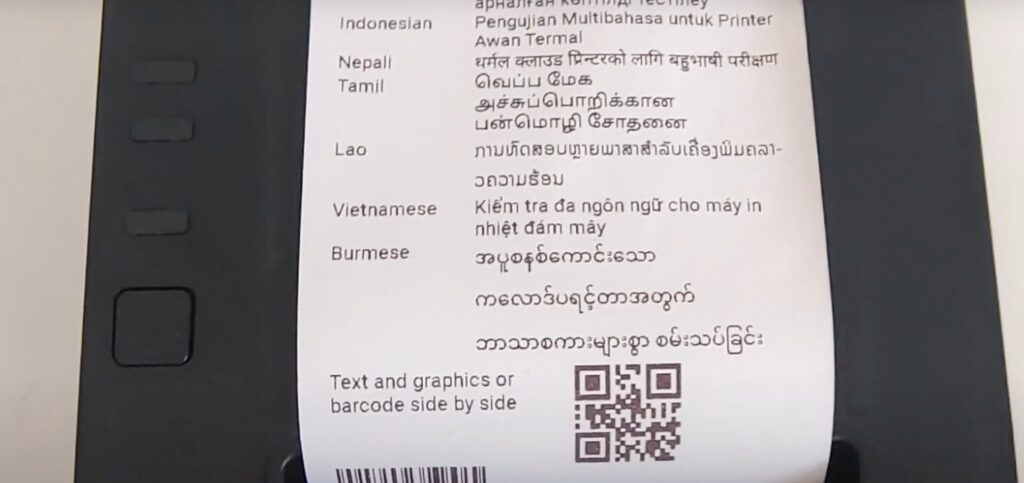Retail and restaurant operations in Thailand often struggle with fragmented POS and payment systems, causing inefficiencies and errors during receipt printing. Without seamless native integration, workflows and customer experiences suffer.
Optimized native POS systems solve these critical challenges effectively.
Seamless receipt printing integrated within native POS and payment systems streamlines Thai retail and restaurant operations by ensuring compliance with local tax laws, supporting bilingual receipts, and enabling efficient digital payments, enhancing both operational efficiency and customer satisfaction.
Explore how leading POS solutions tailored for Thailand combine real-time inventory, multilingual support, and advanced payment technologies like QR codes and mobile wallets. This guide also covers hardware integration, cost benefits, security features, and best practices to help you select and implement the ideal system for your business.

Native integration of POS and payment systems is transforming retail and restaurant operations across Thailand. From streamlining workflows to ensuring tax compliance, these systems are tailored to meet local needs. Let’s explore how integration impacts daily operations, starting with its importance.
Native integration streamlines operations by connecting POS and payment systems seamlessly. For Thai businesses, this often means ensuring compliance with Thai tax regulations[1] for VAT invoicing. Built-in features help automate complex processes, minimizing errors and the need for manual corrections.
Additionally, bilingual interfaces that support Thai and English languages make systems accessible to all staff, irrespective of language proficiency. Many solutions emphasize multi-currency support, allowing businesses to cater to tourists and local customers alike. Compatibility with local payment methods like PromptPay[2] ensures smooth transactions, boosting customer satisfaction.
Receipt printing plays a key role in improving efficiency. Integrated systems enable real-time printing, eliminating delays often caused by traditional setups. They also reduce human and software errors tied to disconnected devices.
Multilingual receipts supporting Thai and English cater to both local and international customers, enhancing satisfaction. Additionally, hardware integration challenges, such as connecting receipt printers directly to the POS system, are often resolved by modern POS setups. These usually offer plug-and-play solutions that streamline operations.
Thai businesses increasingly adopt innovative digital payment methods such as QR code payments[3], mobile wallets, and e-wallets[4]. Integration of these options into POS systems enables faster checkouts and minimizes transactional errors.
Operational benefits include faster processing times, reduced manual input, and an overall better customer experience. These systems also ensure compliance with local security standards, such as EMV[5] and PCI DSS[6], which are crucial for maintaining trust and safeguarding financial transactions.

Choosing the right POS system is vital for Thai retailers and restaurateurs seeking operational efficiency and customer satisfaction. This section provides a deep dive into the leading POS platforms, their hardware compatibility, and cost structures to help you make informed decisions. Let's begin with a feature comparison of top options.
The Thai retail and restaurant markets demand POS systems with specialized features to operate seamlessly. Leading platforms like ConnectPOS[7], Square[8], Lightspeed Retail[9], Toast POS[10], Vend[11], and MYR POS[12] have tailored solutions that meet these needs. Here's how they compare:
These features address critical needs for both single-location stores and multi-branch franchises.
POS hardware plays a pivotal role in improving operational efficiency. From receipt printers to mobile devices, here’s how top systems cater to hardware needs:

Additionally, high-volume environments benefit from durable designs and multilingual interfaces, which enhance usability for diverse teams.
Cost considerations are critical when selecting a POS system. Here's what you need to know about pricing and scalability:
By tailoring your choice to your budget, operational scale, and vendor support needs, you can future-proof your POS investment for success in Thailand’s dynamic market.
In today’s competitive market, retail and restaurant operators must embrace solutions that drive efficiency, reduce costs, and enhance customer satisfaction. By leveraging integrated POS and payment systems, businesses can achieve these goals seamlessly. Let’s explore the key operational benefits starting with cost reduction.
Integrated POS and payment systems offer measurable cost-saving opportunities for retail and restaurant businesses. By reducing dependency on manual receipt printing and excessive paper usage, these systems significantly lower material expenses. For example, digital receipts replace traditional paper ones, cutting costs while appealing to eco-conscious customers.
Additionally, labor costs see a reduction when servers spend less time traveling between tables and printers, thanks to automated tip calculations and electronic bill processing. This time-saving process means staff can focus more on delivering excellent customer service. Furthermore, streamlined payment and receipt printing workflows contribute to faster table turnovers, ensuring restaurants serve more customers during peak hours and boosting overall profitability.
Integrated POS systems enhance both employee efficiency and customer satisfaction. Faster order processing and improved accuracy eliminate entry errors, allowing staff to work more productively while delivering a seamless dining experience.
Moreover, integrated systems empower businesses to create tailored loyalty programs using centralized customer data. Whether through customized promotions or point-reward systems, establishments can proactively build customer loyalty and encourage repeat visits. These systems also allow personalized marketing efforts, such as targeted email campaigns or app notifications highlighting new menu items or limited-time discounts.
Additionally, role-based permissions within the system help divide tasks more effectively and increase accountability among staff. These secure access controls ensure that employees can only operate within their designated permissions, reducing errors and bolstering security while fostering a clear structure.
Integrated systems take security to the next level by incorporating encryption and tokenization technologies. These tools safeguard sensitive data, reducing the risk of fraud and ensuring peace of mind for both customers and operators, especially during transactions.
Another benefit lies in the availability of advanced analytics dashboards. These provide actionable insights into sales trends, peak hours, and which menu items perform best. With this data, restaurateurs can make informed decisions about pricing strategies or promotional campaigns to boost revenue.
Operational data can be further applied to streamline staffing and inventory management. For example, analyzing hourly sales reports can inform smarter employee shift scheduling, while inventory insights help avoid understocking or overstocking issues. This ensures the business runs efficiently without unnecessary waste or labor costs.

Optimizing your retail or restaurant operations begins with a seamless implementation of native POS and payment systems. By focusing on strategic rollouts, informed vendor selection, and staying ahead of industry trends, businesses in Thailand can ensure smoother transitions and greater customer and employee satisfaction.
Implementing a new POS or payment system efficiently requires thoughtful planning, especially in a market as dynamic as Thailand. Follow these steps to ensure success:
The technical backbone of your POS and payment systems can make or break your success. Choose wisely with these considerations in mind:
Sustained success requires staying ahead of trends and consistently optimizing your systems. Here’s how you can achieve this:
By following these best practices, businesses in Thailand can streamline their point-of-sale processes, enhance the customer experience, and prepare for a future of continued innovation.
Optimizing Thai retail and restaurant operations hinges on leveraging native POS and payment system integrations that deliver seamless receipt printing tailored to local market demands. This integration not only ensures compliance with Thai tax regulations and multilingual requirements but also enhances efficiency through real-time inventory tracking and smooth digital payment processing.
By adopting advanced POS solutions that support native hardware and local payment innovations—such as QR code and mobile wallet payments—businesses can reduce operational costs, minimize errors, and elevate customer experience.
